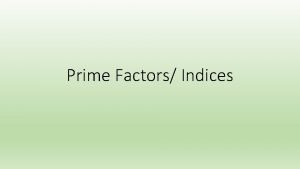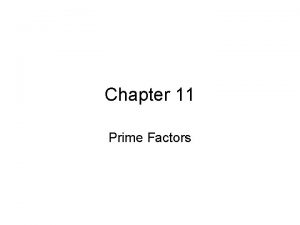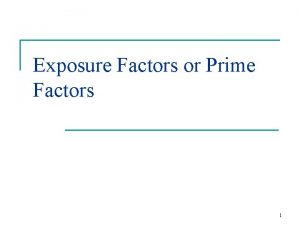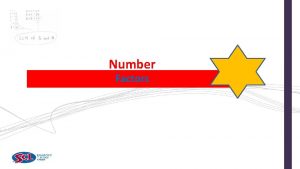Demand its various factors What is demand In
















- Slides: 16

Demand its various factors.

What is demand? In economics, demand is the quantity of a good that consumers are willing and able to purchase at various prices during a given period of time. The relationship between price and quantity demanded is also known as the demand curve. Demand for a specific item is a function of item's perceived necessity, item's price, item's perceived quality, convenience of item, available alternatives, purchasers' disposable income, purchasers' tastes, and many other factors.

Supply vs Demand As supply goes up demand goes down. As demand goes up supply goes down.

Factors affecting demand: PRICE OF GOODS Expectation of Change in the Price in Future Price of Related Goods Demand Tastes and Preferences Income of the Consumer

1. Price of the Given Commodity It is the most important factor affecting demand for the given commodity. Generally, there exists an inverse relationship between price and quantity demanded. It means, as price increases, quantity demanded falls due to decrease in the satisfaction level of consumers. For example, If price of given commodity (say, tea) increases, its quantity demanded will fall as satisfaction derived from tea will fall due to rise in its price.


2. Price of Related Goods Substitute Goods Substitute goods are those goods which can be used in place of one another for satisfaction of a particular want, like tea and coffee. An increase in the price of substitute leads to an increase in the demand for given commodity and vice-versa. For example, if price of a substitute good (say, coffee) increases, then demand for given commodity (say, tea) will rise as tea will become relatively cheaper in comparison to coffee. So, demand for a given commodity is directly affected by change in price of substitute goods. Complementary Goods Complementary goods are those goods which are used together to satisfy a particular want, like tea and sugar. An increase in the price of complementary good leads to a decrease in the demand for given commodity and vice-versa. For example, if price of a complementary good (say, sugar) increases, then demand for given commodity (say, tea) will fall as it will be relatively costlier to use both the goods together. So, demand for a given commodity is inversely affected by change in price of complementary goods.


Examples of Substitute and Complementary Goods: - Complementary substitute Tea and Coffee Coke and Pepsi Pen and Pencil CD and DVD Ink pen and Ball Pen Rice and Wheat

3. Income of the Consumer: - Demand for a commodity is also affected by income of the consumer. However, the effect of change in income on demand depends on the nature of the commodity under consideration. (i). If the given commodity is a normal good, then an increase in income leads to rise in its demand, while a decrease in income reduces the demand. (ii). If the given commodity is an inferior good, then an increase in income reduces the demand, while a decrease in income leads to rise in demand. For Example: Suppose, income of a consumer increases. As a result, the consumer reduces consumption of toned milk and increases consumption of full cream milk. In this case, ‘Toned Milk’ is an inferior good for the consumer and ‘Full Cream Milk’ is a normal good.

S is the curve for consumers income D 1, D 2 are demand curves respectively. It can be Clearly seen That as consumers Income goes up the Quantity demanded Q 1 and Q 2 also increases

4. Tastes and Preferences: - Tastes and preferences of the consumer directly influence the demand for a commodity. They include changes in fashion, customs, habits, etc. If a commodity is in fashion or is preferred by the consumers, then demand for such a commodity rises. On the other hand, demand for a commodity falls, if the consumers have no taste for that commodity.


5. Expectation of Change in the Price in Future: If the price of a certain commodity is expected to increase in near future, then people will buy more of that commodity than what they normally buy. There exists a direct relationship between expectation of change in the prices in future and change in demand in the current period. For example, if the price of petrol is expected to rise in future, its present demand will increase.

As price changes demand shifts.

 I comb its hair and love its shining eyes
I comb its hair and love its shining eyes When a train increases its velocity, its momentum
When a train increases its velocity, its momentum Sunny rainy windy cloudy
Sunny rainy windy cloudy If its square its a sonnet
If its square its a sonnet Its halloween its halloween the moon is full and bright
Its halloween its halloween the moon is full and bright Its not easy but its worth it
Its not easy but its worth it Whats a prime factor
Whats a prime factor Factor tree 90
Factor tree 90 Site vs situation factors
Site vs situation factors Abiotic factor
Abiotic factor Abiotic factors and biotic factors
Abiotic factors and biotic factors Aboitic environment
Aboitic environment Is tulip abiotic or biotic
Is tulip abiotic or biotic What is site vs situation
What is site vs situation Gcf of 8 and 12
Gcf of 8 and 12 7-1 factors and greatest common factors
7-1 factors and greatest common factors 8-1 factors and greatest common factors
8-1 factors and greatest common factors































